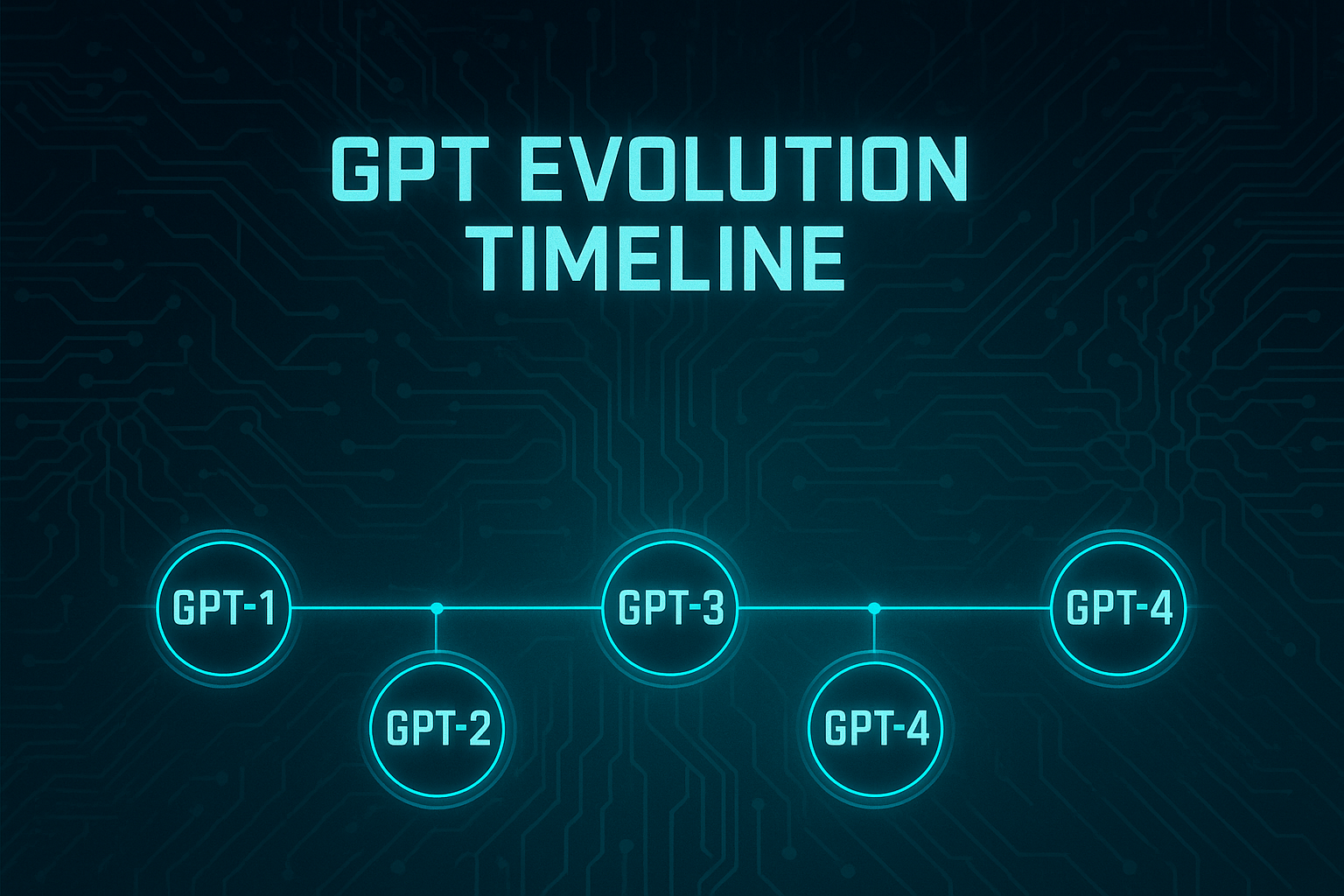The GPT series, best known through ChatGPT, has seen rapid evolution over the years. With each new version, its capabilities have changed dramatically. In this article, we’ll explore how GPT has advanced by looking at what each generation could—and couldn’t—do.
GPT-1 (2018) : A Prototype-Level Beginning
Released in 2018, GPT-1 was still in the research phase. With only around 117 million parameters and training data mainly from books, it could predict simple continuations of text. However, it was far from being practical –it couldn’t handle conversation, reasoning, or structured outputs. It served mainly to demonstrate the potential of the Transformer architecture and laid the foundation for future development.
GPT-2 (2019) : AI That Writes “Plausible” Text
In 2019, GPT-2 marked a significant leap forward with 1.5 billion parameters and training data from high quality internet sources (WebText). This model could generate coherent long-form content that resembled news articles or product descriptions. It surprised many with how “real” the text felt.
However, it still struggled with true comprehension. While it could string sentences together convincingly, it lacked a true understanding of context or the ability to answer questions accurately. Deep reasoning and extended conversations were still beyond its reach.
GPT-3 (2020) : The Emergence of General-Purpose AI
GPT-3 introduced a massive jump in scale, with 175 billion parameters. Its capabilities showed that a single model could handle translation, summarization, question answering, and even basic code generation— all without specific task training. This was made possible by prompt engineering, where simply phrasing your instruction cleverly could yield surprisingly effective results.
Still, GPT-3 wasn’t perfect. It often generated incorrect but plausible–sounding information—- a problem known as “hallucination”. It also had trouble maintaining context over longer conversations, frequently losing track of what had been said.
GPT-4 (2023) : Toward a Truly Practical Conversation AI
GPT-4, released in 2023, was a major breakthrough in terms of accuracy and versatility. While its parameter count was not officially disclosed (estimated to exceed 1 trillion), it introduced multimodal capabilities allowing it to accept both text and image inputs.
This model excelled at reasoning and could handle complex queries with improved precision. It could answer medical or legal questions at a basic level and even analyze hand-written notes or diagrams to produce structured outputs like code. Although not infallible, it became a reliable tool for a wide range of users in everyday tasks.
GPT-4.5 / GPT-4 Turbo (Late 2023) : Faster, and Better with Long Text
Launched toward the end of 2023, GPT-4.5 (often referred to as GPT-4 Turbo) focused on performance improvements. It could process up to 128,000 tokens in a single session — equivalent to an entire book’s worth of text.
This enabled entirely new use cases, such as summarizing entire research papers or comparing large documents at once. It also offered faster response times and improved cost efficiency, making it a popular choice for professionals using the ChatGPT Plus plan.
GPT-5 (Upcoming) : The Next Era of Memory and Personalization
Currently in development, GPT-5 is expected to push boundaries even further. OpenAI has hinted at features like persistent memory and user personalization, where the AI remembers your preferences, previous conversations, and projects.
This could allow it to provide tailored advice, adapt to your goals, and feel even more like a personal assistant. The release is rumored for sometime after mid-2025.
Summary : How Far Has GPT Come?
Here is a quick summary of the evolution of GPT:
| Model | Year | Key Features | Achievements |
|---|---|---|---|
| GPT-1 | 2018 | Prototype | Basic text continuation |
| GPT-2 | 2019 | Natural long-form text | News-like content generation |
| GPT-3 | 2020 | General-purpose capabilities | Translation, summarization, Q&A |
| GPT-4 | 2023 | Multimodal, reasoning | Image understanding, better logic |
| GPT-4.5 | 2023 | Long context, fast responses | Book-level input and summarization |
| GPT-5 (planned) | 2025+ | Memory, personalization | Long-term context and adaptation |
Today, GPT is no longer just a “smart search engine”—it’s becoming an intellectual partner. And its evolution is far from over.


Leave a Reply